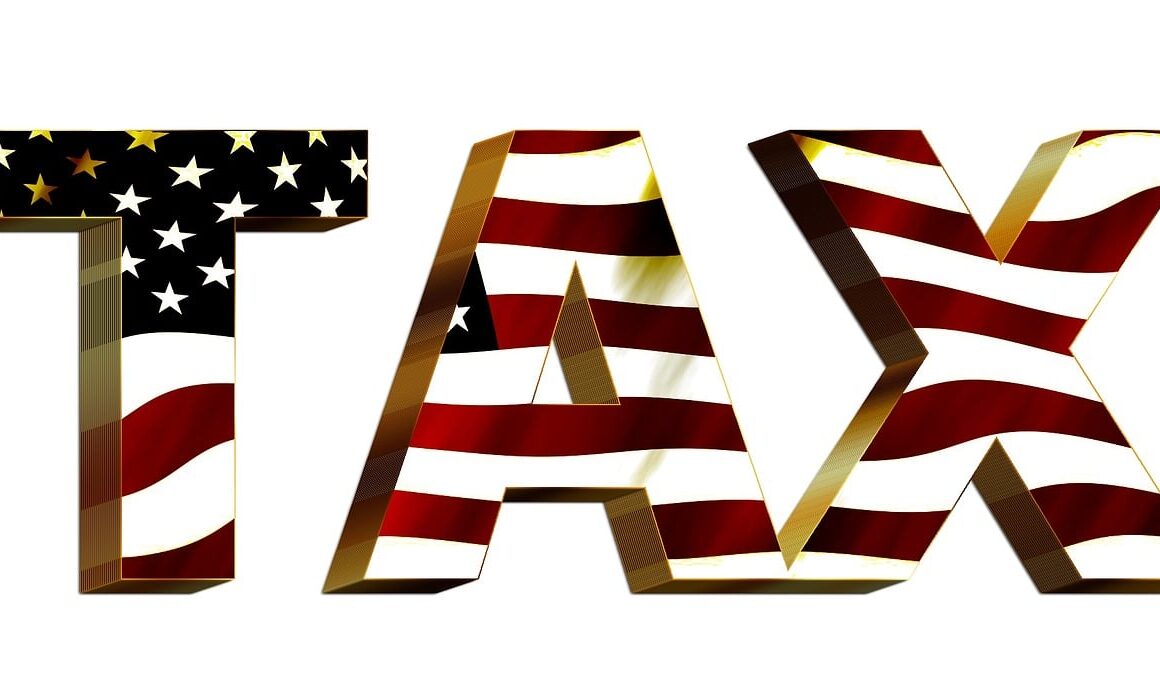Leveraging Tax-Deferred Accounts to Boost Savings and Cut Taxes
Tax planning for the self-employed is a crucial aspect of financial management that can greatly impact your overall savings. By making use of tax-deferred accounts, self-employed individuals can effectively reduce their taxable income while simultaneously saving for retirement. One of the primary benefits of utilizing these accounts is the ability to defer taxes until withdrawals are made. Common options include Individual Retirement Accounts (IRAs) and Solo 401(k) plans that offer unique features beneficial for the self-employed. These accounts allow business owners to set aside a significant portion of their income, making valuable contributions that future-proofs their financial stability. By choosing the right tax-deferred account, self-employed individuals can take advantage of both immediate tax benefits and long-term growth opportunities. Mastering tax planning involves knowing the contribution limits and rules associated with each type of account to maximize the benefits. Seeking professional advice ensures compliance along with strategic planning. Staying informed about changes in tax regulations can provide even greater advantages, aiding self-employed individuals in making better financial decisions. It pays to be proactive in tax planning, yielding long-term savings and stress-free financial management in the future.
One significant advantage of tax-deferred accounts is the compounding of investment returns. When earnings on investments are not taxed until withdrawal, they can accumulate exponentially over time. For self-employed individuals, this means that maximizing contributions to their accounts not only minimizes current taxable income but also creates a long-lasting financial foundation for retirement. For example, consider an Individual Retirement Account (IRA) wherein contributions can lead to growth without immediate tax implications. An effective tax planning strategy will also take into account the timeline for withdrawals and the potential tax implications at that time. Relying on these accounts allows for greater flexibility and control over personal finances, ensuring that money can work harder without unnecessary tax liabilities. Self-employed individuals should also explore whether traditional IRAs or Roth IRAs are a better fit depending on their current income and long-term financial goals. Assessing personal financial situations annually allows individuals to adapt and respond to changes effectively. Being well-versed in these accounts can lead to a more secure and fruitful financial future, making the effort of tax planning truly worthwhile for the self-employed individual.
Types of Tax-Deferred Accounts
Self-employed individuals have several options when it comes to tax-deferred accounts, each with its unique features and benefits. Among these, the Individual Retirement Account (IRA) is a foundational option with tax-deferred growth potential. Traditional IRAs allow contributions to reduce taxable income, while Roth IRAs provide tax-free withdrawals in retirement, although contributions are made with after-tax dollars. The Solo 401(k) is another excellent choice for self-employed individuals, allowing for higher contribution limits, particularly for those earning more substantial incomes. This account offers the ability to contribute as both an employee and employer, creating additional tax-saving opportunities. Additionally, SEP IRAs are designed specifically for self-employed individuals, enabling simplistic contribution processes and higher limits compared to traditional IRAs. Choosing the right tax-deferred account depends on an individual’s financial standing and long-term goals. Regularly reviewing and adjusting contributions according to earnings and taxation helps ensure maximum benefit extraction. Moreover, utilizing these accounts not only bolsters savings but also considerably aids retirement planning, making informed decisions crucial in enhancing overall financial health and well-being.
Tax planning for those who are self-employed encompasses understanding the intricate rules governing tax-deferred accounts and ensuring compliance. Staying informed about contribution limits, withdrawal rules, and eligibility criteria is paramount in these accounts. Tax-deferred accounts come with specific deadlines for contributions, which can vary by account type and require careful monitoring. For instance, with traditional IRAs, contributions can be made until the tax filing deadline, offering flexibility for self-employed persons striving to reduce their taxable income for the prior year. Additionally, understanding penalties for early withdrawals is crucial to ensure that the savings remain intact for intended retirement purposes. Proper planning can substantially decrease tax burdens and enhance overall savings, enabling individuals to work toward long-term financial security. By regularly consulting with a tax advisor and adjusting plans accordingly, self-employed individuals can navigate the complexities of tax regulations. Taking advantage of available tax-deferred accounts not only helps in cutting taxes but also motivates self-employed individuals to save diligently. Ultimately, proactive tax planning will ensure a stable financial future, allowing individuals to enjoy the fruits of their labor without the looming concern of excessive taxation.
Maximizing Contributions
For self-employed individuals, maximizing contributions to tax-deferred accounts is an essential aspect of effective tax planning. Understanding contribution limits for IRAs and Solo 401(k)s enables individuals to fully leverage their income, thus reducing taxable income significantly. For example, in 2023, individuals can contribute up to $6,500 to a traditional or Roth IRA, or $7,500 if age 50 or older, while Solo 401(k) contributions can reach $66,000 depending on income levels. It’s advisable to make regular contributions throughout the year, rather than waiting until the deadline, as it allows for increased compounding potential. Moreover, self-employed individuals should not overlook the possibility of backdoor Roth IRAs, which can provide advantageous tax benefits for high-income earners. Additionally, ensuring contributions are aligned with profit levels means a sustainable approach to retirement savings. By setting aside a specific percentage of monthly income for these accounts, individuals create a disciplined saving habit. Consistent monitoring of accounts will track their growth, ensuring individuals remain focused on long-term retirement goals. Ultimately, maximizing contributions serves to not only enhance savings but also minimize tax liabilities.
Another key aspect of tax planning for the self-employed is the effective management of distributions from tax-deferred accounts. When it comes to retirement, knowing when and how to withdraw funds is crucial in optimizing tax benefits. Many self-employed individuals face decisions regarding traditional IRAs and 401(k) distributions. Withdrawals made before age 59½ can incur penalties, making it essential to have appropriate strategies for accessing these funds. Self-employed individuals should consider their income situation upon reaching retirement and strategize withdrawals accordingly to minimize overall tax liability. Planning for Required Minimum Distributions (RMDs) in traditional accounts becomes crucial, as failing to comply can lead to tax penalties. The possibility of rolling over funds between retirement accounts can also offer further flexibility and tax advantages. In addition, keeping track of tax brackets can help individuals stay mindful of their withdrawal strategies to reduce tax burdens. By effectively managing distributions, self-employed individuals can ensure that they do not only preserve their hard-earned savings but also optimize their overall financial outcome in retirement. Understanding these critical components is fundamental in executing advanced tax planning tactics.
Staying Informed
In the realm of tax planning for the self-employed, staying informed about the evolving regulations is essential. Tax laws undergo frequent changes, affecting contribution limits, tax rates, and rules governing account withdrawals for retirement savings. Self-employed individuals need to stay updated to effectively adjust their strategies and maximize their tax benefits. Regular reviews of financial and tax planning materials are necessary to ensure complete compliance with current regulations. Additionally, joining relevant professional organizations, attending workshops, or enrolling in continuing education courses can be beneficial in sharpening an individual’s understanding of complex tax legislation. Many financial services also offer resources which help self-employed individuals demystify the tax-deferred accounts and their respective advantages. Furthermore, proactive engagement with tax professionals can inform self-employed individuals about tax-efficient investment strategies and help in navigating potential pitfalls. Through consistent learning and adaptability, self-employed individuals can genuinely improve their financial outcomes. Ultimately, knowledge is a powerful tool in tax planning, allowing individuals to take charge of their finances proactively. Leveraging available resources helps in aligning financial goals to achieve unparalleled success in boosting savings while effectively cutting taxes.
To conclude, leveraging tax-deferred accounts represents a powerful strategy for self-employed individuals seeking to enhance savings and minimize taxes effectively. By understanding the unique attributes of various accounts, managing contributions, and planning withdrawals strategically, self-employed individuals can build a robust financial future. Actively engaging in tax planning not only imparts immediate financial benefits but also fosters longevity in financial security and personal wealth. Staying informed about tax laws plays a pivotal role in creating adaptive financial strategies, ensuring self-employed individuals are well-prepared for any shifts in the regulatory landscape. Establishing a comprehensive tax strategy integrates the advantages of tax-deferred accounts and positions individuals to achieve both short and long-term financial goals. With careful planning and informed decisions, self-employed individuals can harness the full potential of tax-deferred accounts, reaping significant benefits. The journey toward financial success requires diligent focus and ongoing education, particularly in tax landscapes that may continuously evolve. Ultimately, by fully leveraging these powerful financial tools, self-employed individuals can make informed decisions that yield substantial savings, ensuring a comfortable and secure future.


